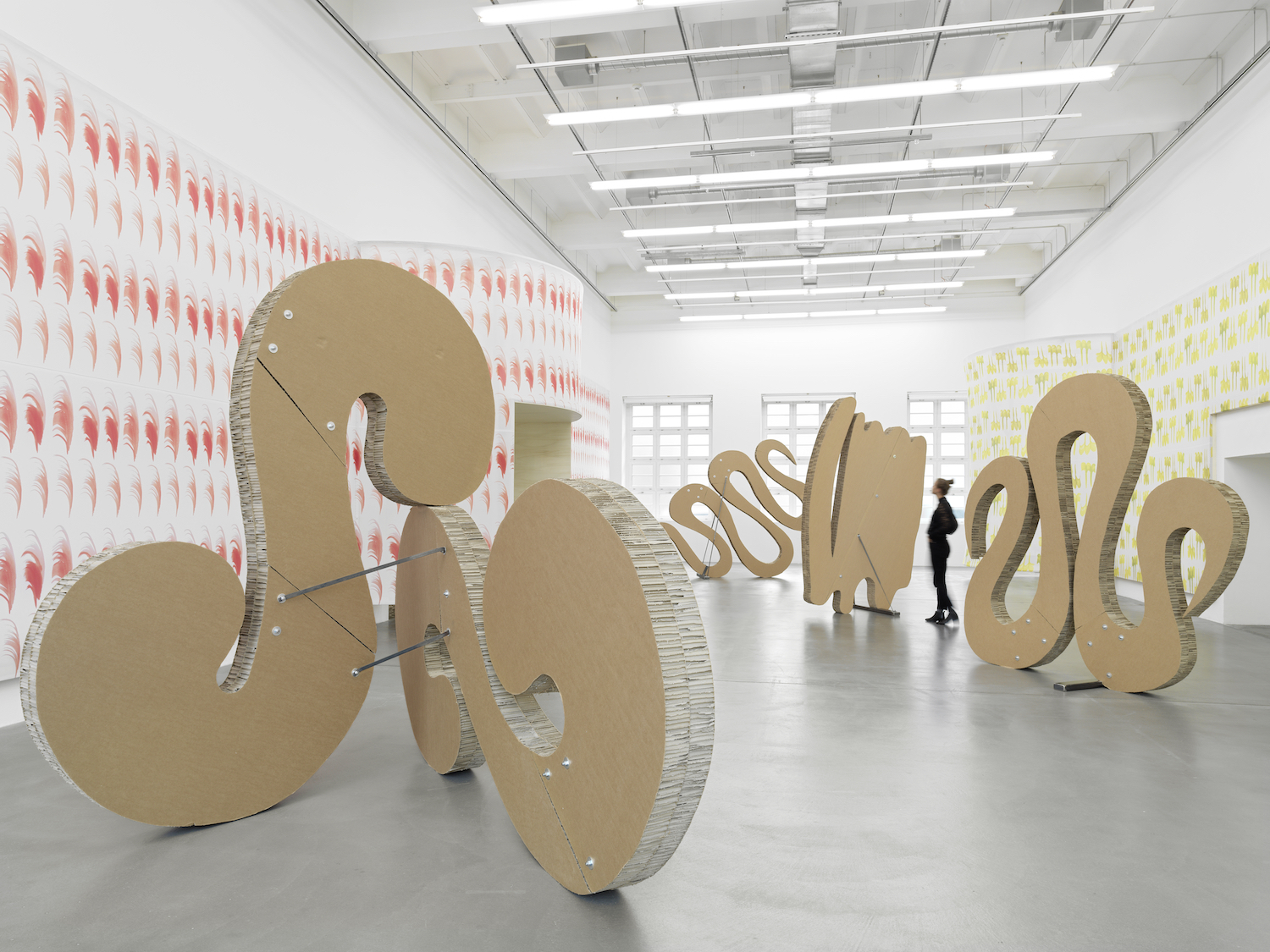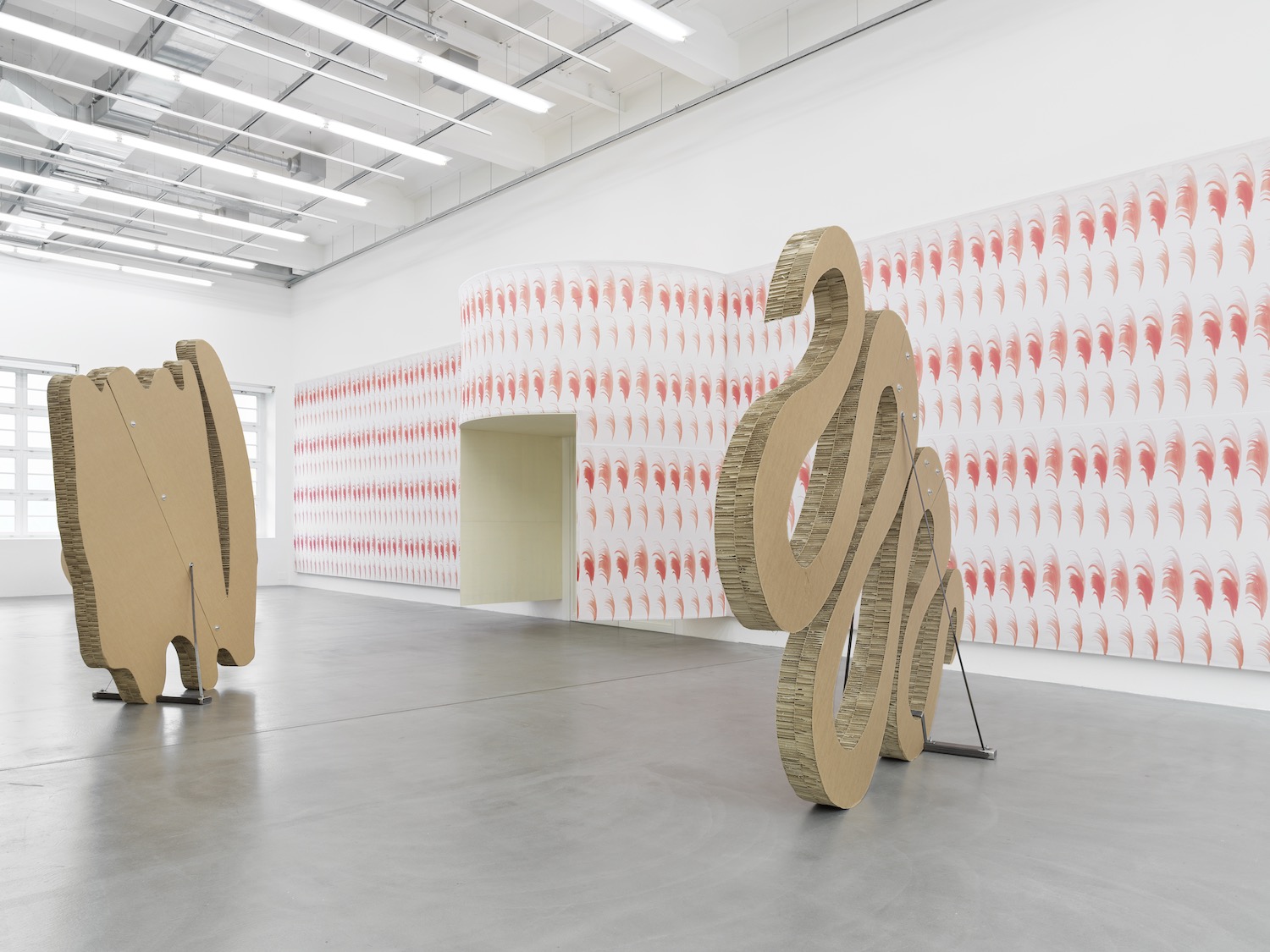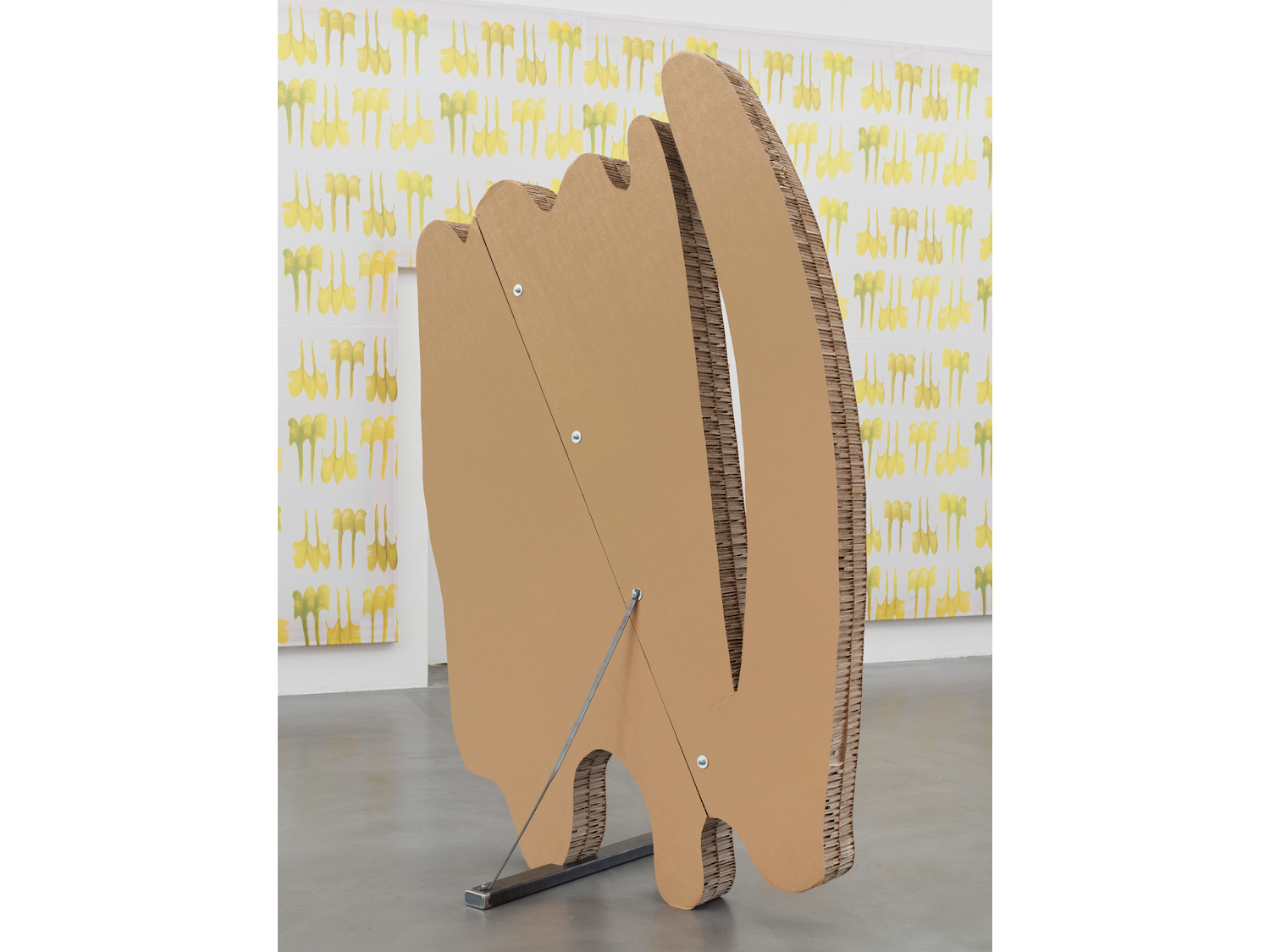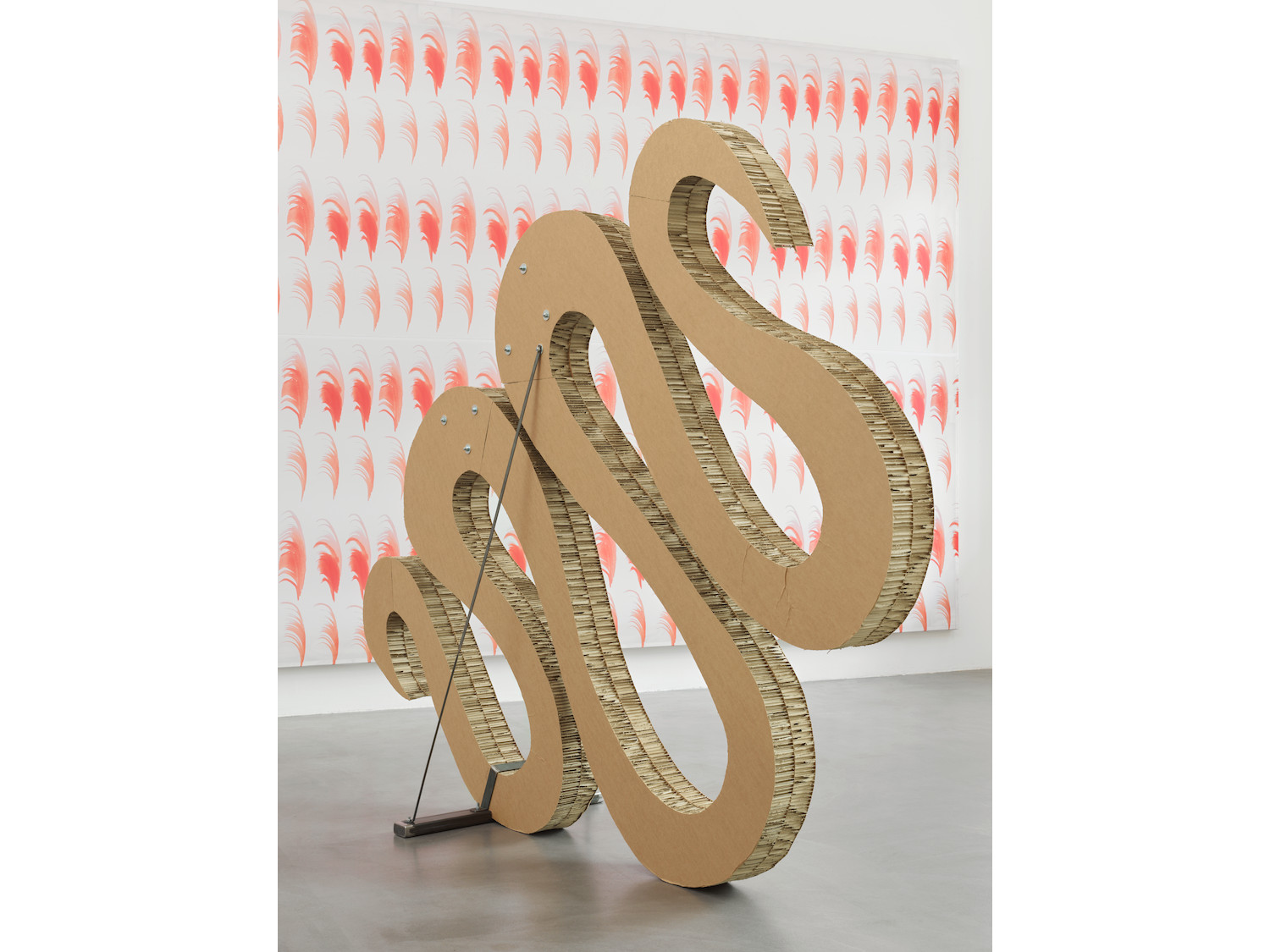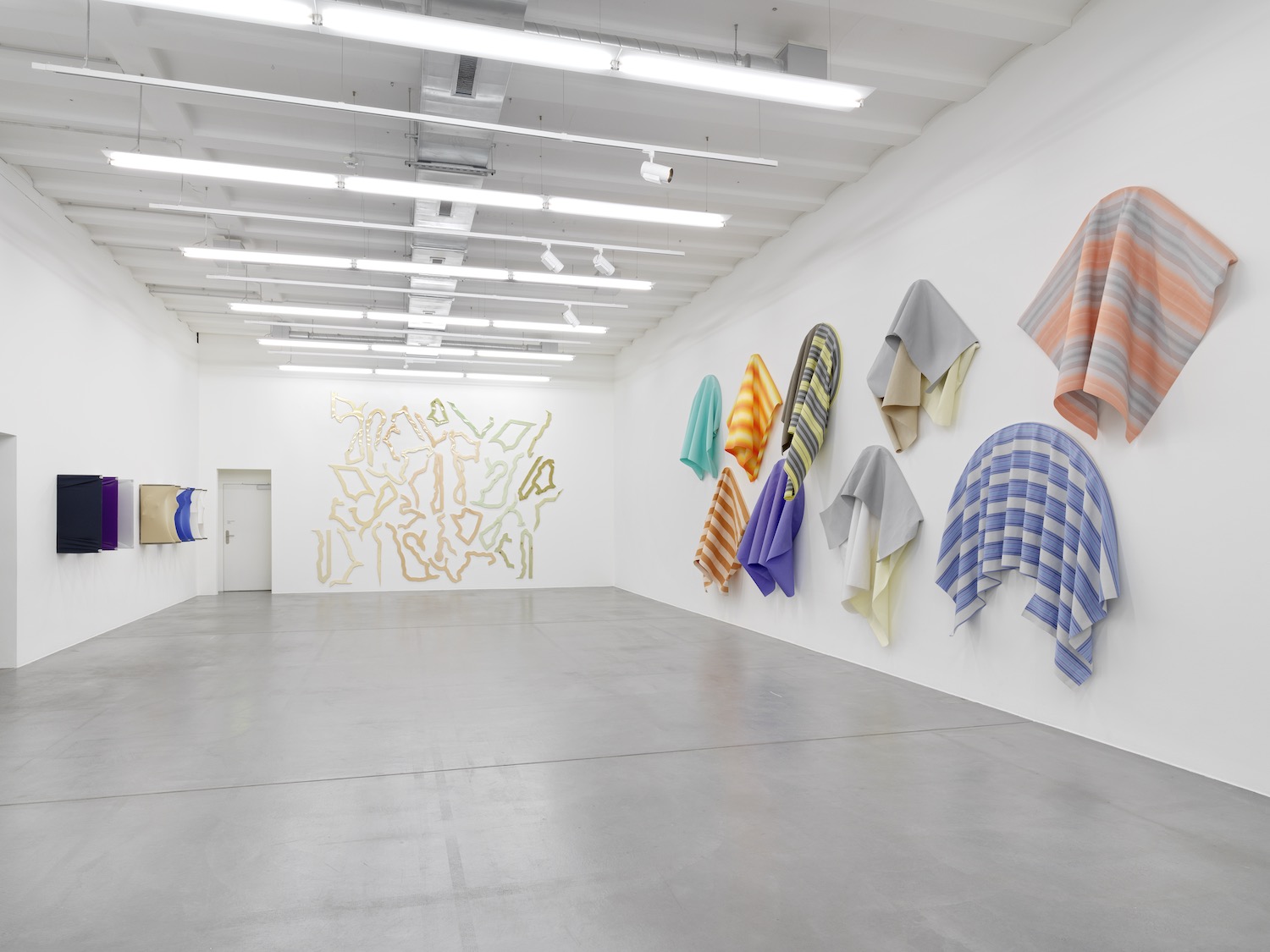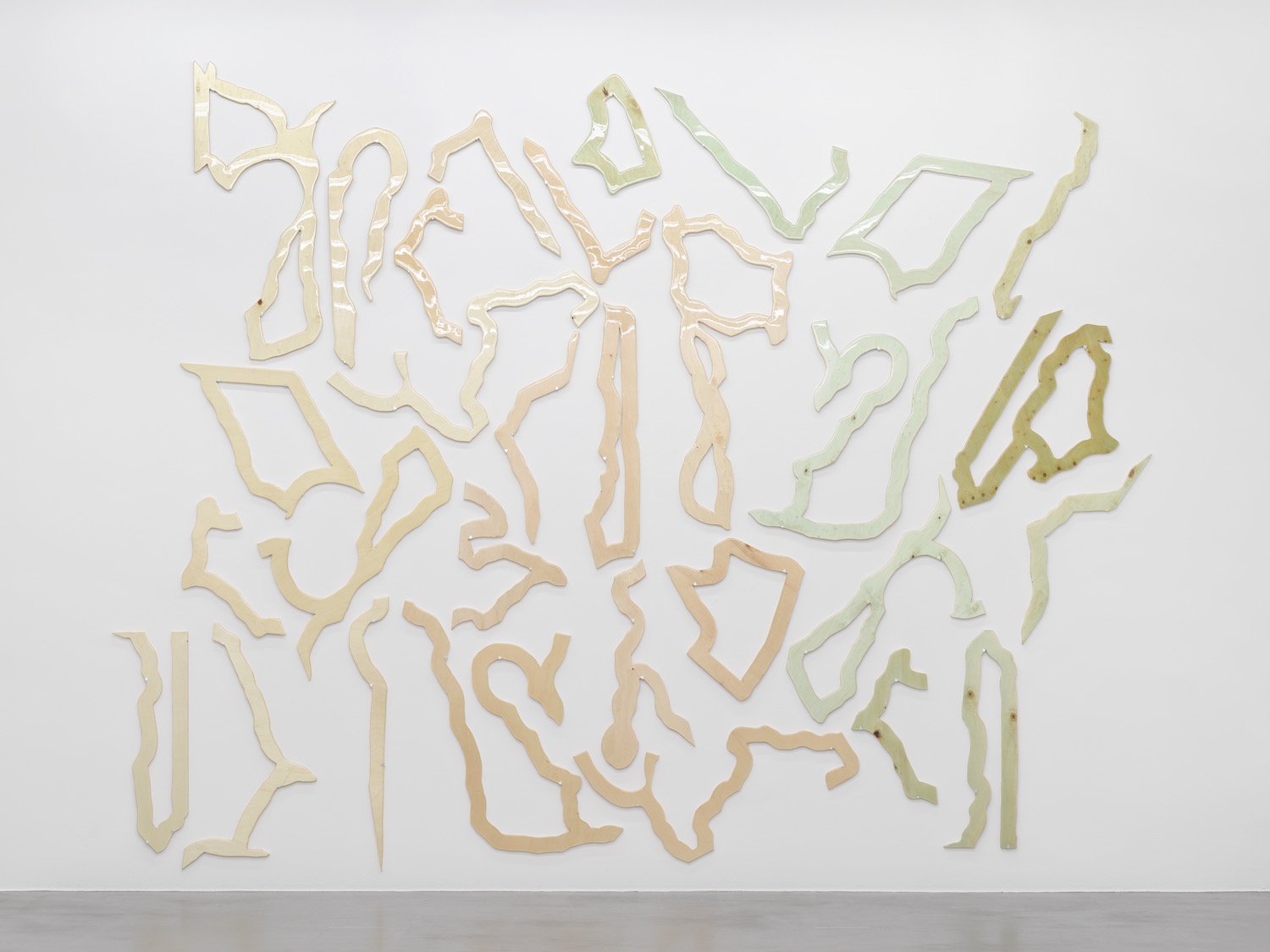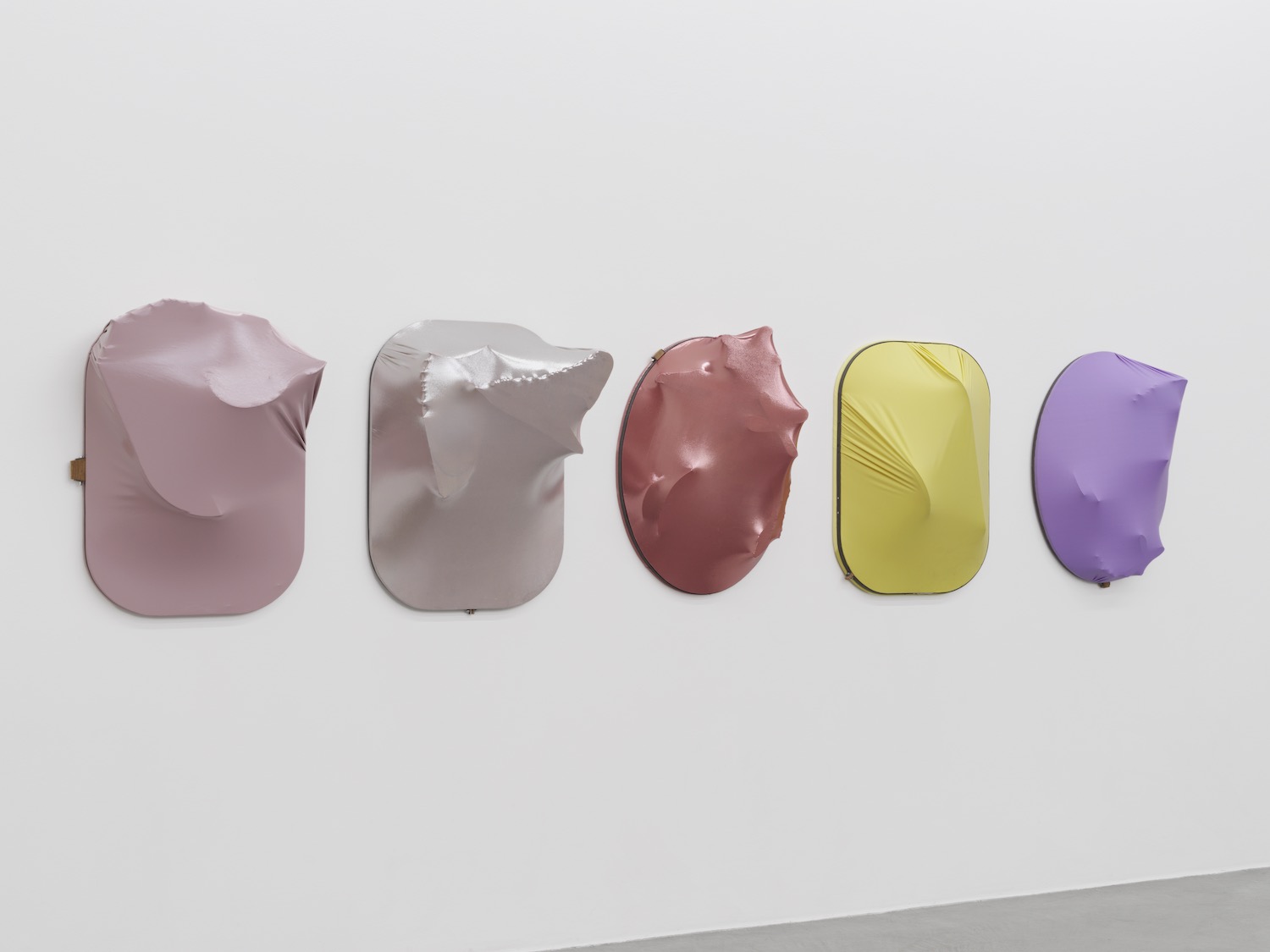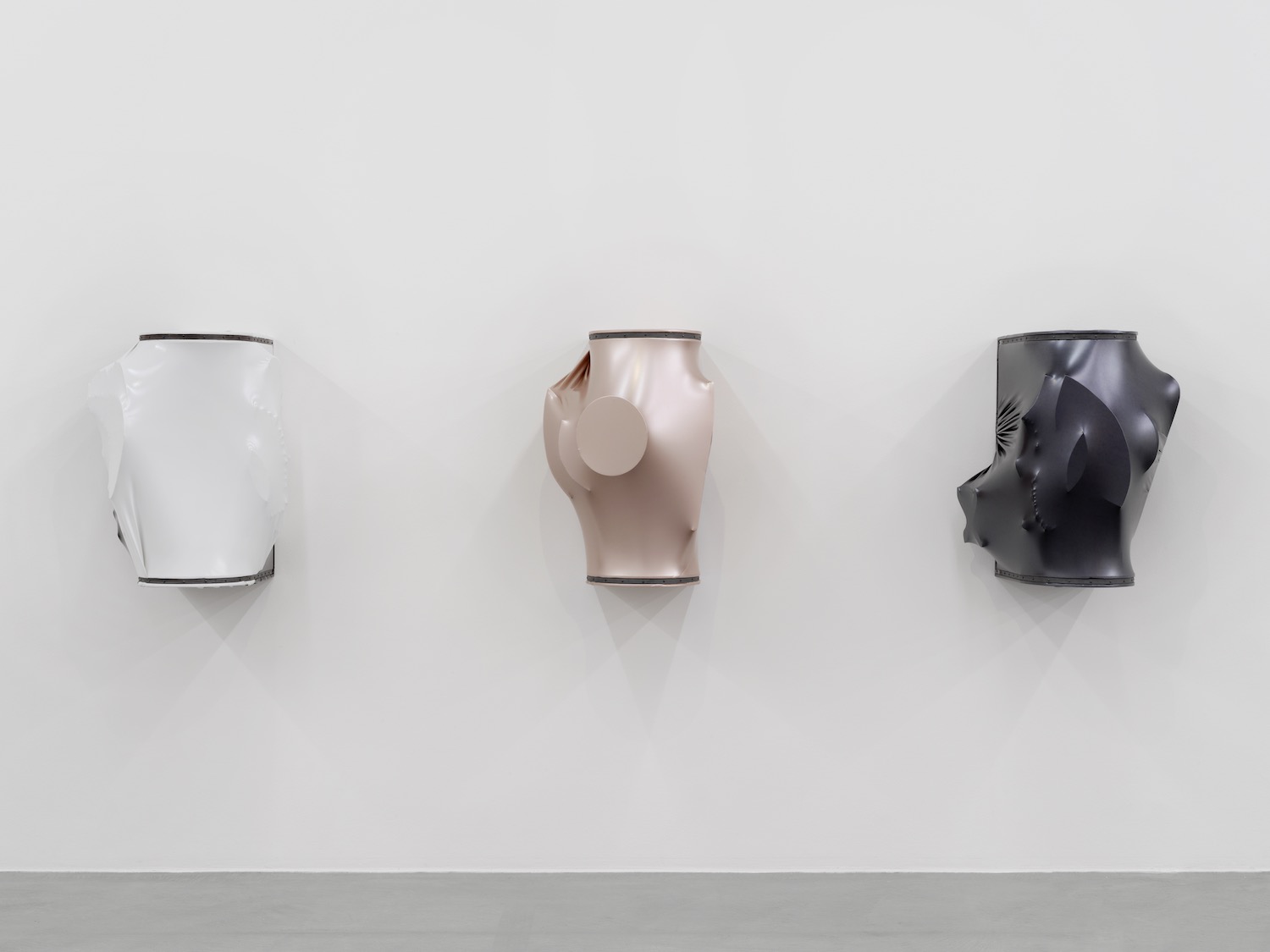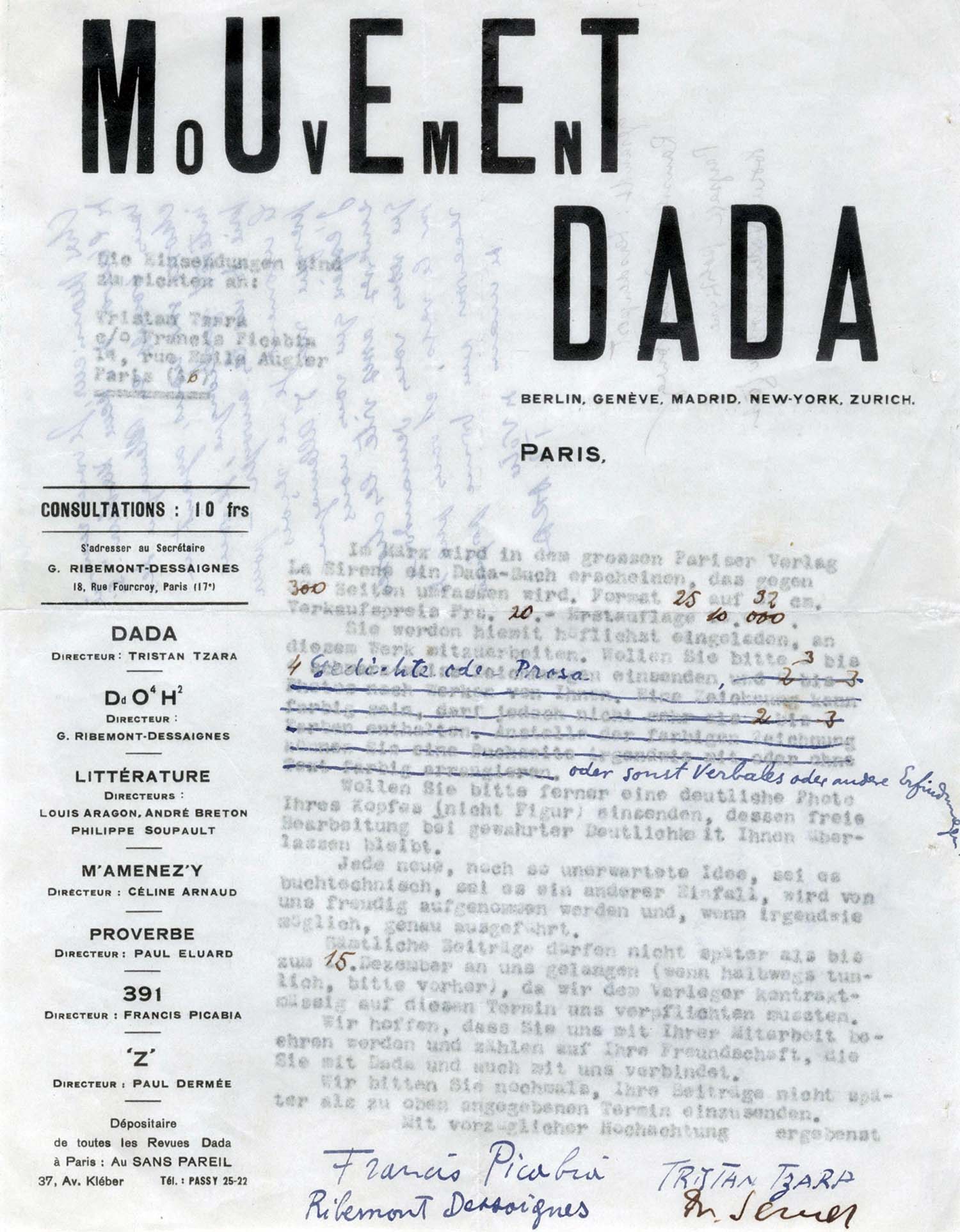Sonia Kacem’s exhibition at Museum Haus Konstruktiv starts with large, gatelike semicircular structures that frame the entryways to the first exhibition room. Prints of red and yellow brush strokes adorn them. In the middle of this room, visitors circulate around large, convoluted paperboard forms. In the second room hosting the exhibition, on the first floor, smaller structures hang on the wall. Facing the entrance, pieces of cloth rest on the wall, combining stripes and gradients of plain colors. On the left, Ensemble of 30 Signs (2018), made of wood scraps, intricate motives on the wall. On the right and beside the entry, fourteen pieces of colored cloth on wooden structures hang on the wall, in tones ranging from glossy prune and black to a bright blue and white.
As Susanna Koeberle notes in a previous review of the exhibition, Kacem’s work interacts well formally with the postwar concrete art whose heritage is at the core of the museum’s collection. However, Kacem does not seek to establish a universal science of forms and colors as Theo van Doesburg and Max Bill did. The room on the upper floor conceals an eroticism that contrasts with the apparent coldness of the exhibition hall, with its florescent lighting and concrete floor. As in her exhibition “Loulou” (MAMCO, Geneva, 2014) with its cloth pyramids, and “Nightshift” (CAC, Geneva, 2016) with its fallen columns, what Kacem offers is a minimalistic cabaret. What is different in this exhibition is that the main reference is Cairo and not Las Vegas. The shiny plastic fabric Kacem uses for some of the structures is the same as that worn by dancers in Cairo. The structures acquire an aggressive sensuality through this clothing. Other wooden structures dressed in cloth resemble the angles of shabby sofas. The monumental gates of the entrance, with their neoclassical touch, fit well with this decorum.
Orientalism and its combining of reject and fascination through othering relates to surfaces. One of Edward Said’s core criticisms of the Orientalist gaze is the superficiality of its apprehension of the southern shores of the Mediterranean. Yet the totalizing and reductive perception of a society that Said describes is common to foreigners. Kacem grew up in Switzerland with a Tunisian father. In contrast to the European scholars and artists of the colonial period Said focuses on, familiarity and distance are deeply entangled in Kacem’s relation to the region. She mobilizes minimalist and neoclassical references that have long influenced her work to explore places to which she has an intimate link through family ties, though mostly experienced as a foreigner. The puzzlement one feels when faced with unknown writing techniques is echoed in the random calligraphy of Kacem’s 30 Signs. Elusive surfaces of cloth make it difficult to draw borders between inside and outside, and to clearly distinguish what is a superficial ornament (the superflu of the exhibition’s title) or a core element of apprehension. Moreover, as is often the case when otherness comes up as central to a relation, desire blurs perspectives.
An impossible mimesis of a space escaping systematic apprehensions, Kacem’s “Le Superflu” reminds visitors of our capacity to lose ourselves in a world of haphazard landmarks. As such, it bears the promise of an elsewhere and its vertigo. Yet, it also anticipates its reproduction as a simulacrum. A flaring reflection of longing, visiting Kacem’s exhibition is a complex and rewarding experience.

